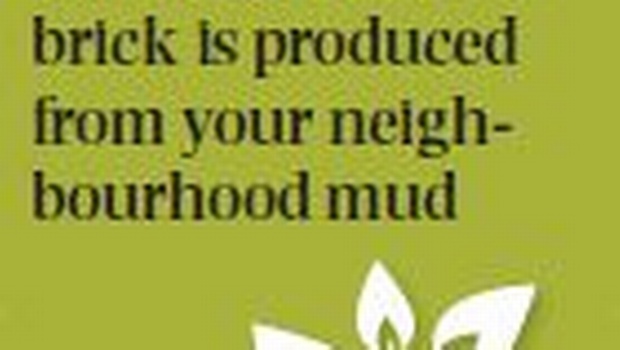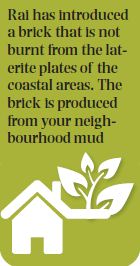Puttur :
Call it green revolution or a new building technique—Chidananda Rai of Puttur shows how to build a dream house which is cooler and at 40 per cent the cost of construction. He has introduced a brick that is not burnt or mined from the laterite plates of the coastal areas. In fact, the brick is produced from your neighbourhood mud. He calls it the mud brick.
Perching on a hillock in Bolwar on the outskirts of Puttur town, Rai’s brick plant has machinery that no conventional brick producer has.
There is no furnace or a big pile of firewood, but just a mechanical sieve, and a pounder which compresses the loose soil into a hard brick.
But will it take the pressure of weight as well as brave the rain and shine?
When asked, Rai explained: “Mud has an extraordinary quality when it is compressed with moisture. This is a simple technique: freshly dug mud is sieved and mixed with a compound of 10 per cent of cement and two chemical additives, directed into a mould and compressed under a 30 tonne pressure. And we have a brick that is as solid as a laterite stone and perhaps stronger than the burnt brick. The bricks will have to be cured under moist conditions for three days and they are ready for taking the load.”
This product can be termed a green housing technique unlike the conventional ones.
In the case of burnt brick, the makers use tonnes of firewood which denude forests and the burning of wood creates environmental pollution. The laterite stones that are generally used in construction in the coastal region are mined from the laterite blocks which leave large voids in the ground. Moreover, laterite stocks don’t last forever, Rai said.
Rai displayed a strength report issued by the National Institute of Technology Karnataka.
He said the certificate has mentioned that the mud brick had 16.8 psi (pressure point) load-bearing capacity which was as good as the laterite stones. People who have used mud bricks have told me that their houses were relatively cooler inside. The bricks have ridges that alleviate the need for using cement between the blocks.
They are placed on each other with the help of the ridges and to make them more stable a thin coat of cement grout is used.
Since there is no need of plastering it, the wall is ready for painting which saves nothing less than 40 per cent of the cost of construction. There is no need for sand too, he added.
He has found a market in Kodagu district where mud bricks are being used for constructing homestays and other buildings. This is because a load of sand costs nothing less than `25,000 against `7,000 per load in the coastal areas and in Mysuru, he said.
source: http://www.newindianexpress.com / The New Indian Express / Home> States> Karnataka / by M Raghuram / February 17th, 2015

